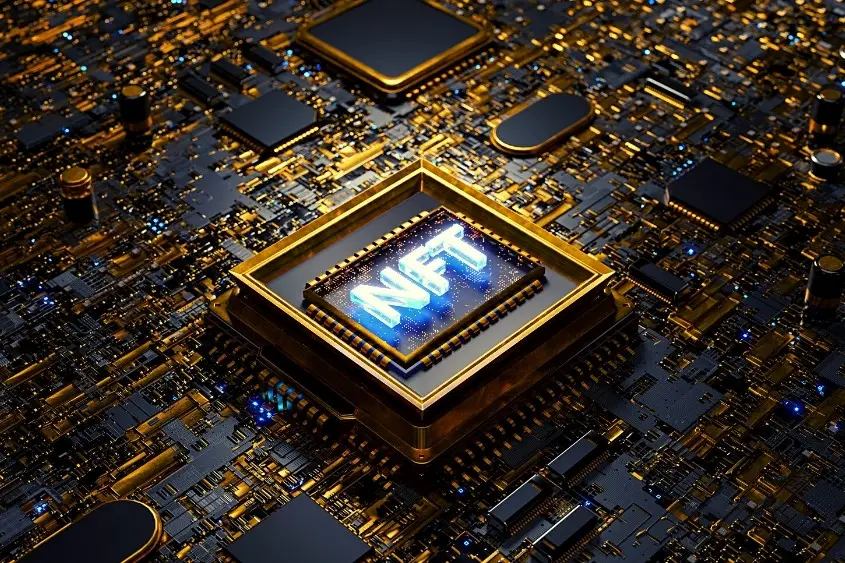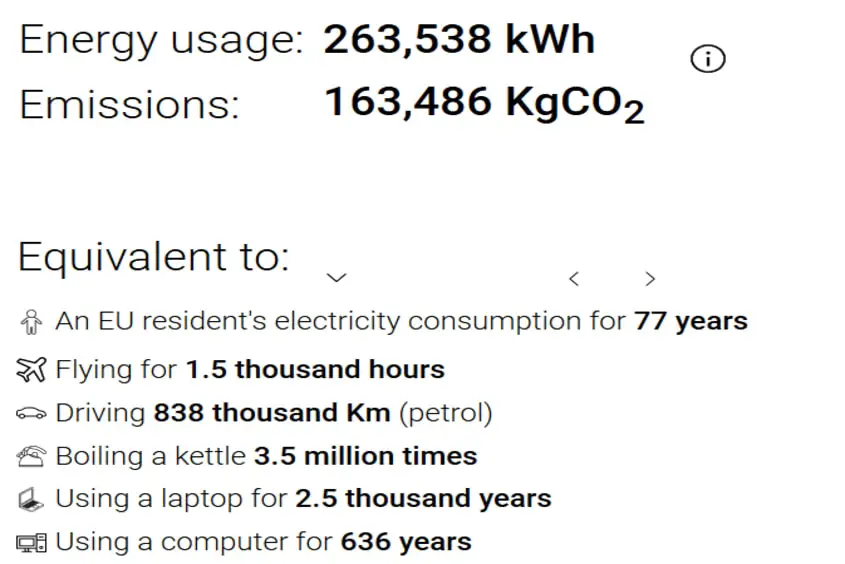NFTs have been a major craze since early 2021. At the same time, issues regarding the energy consumption of NFTs have also been a much-discussed topic among critics. Do NFTs really consume that much energy?
From minting to sale, an NFT uses approximately 340-kilowatt hours of energy. This is more than one-third of the energy a typical American home consumes in one month. And still, this figure excludes the energy needed for designing and creative processes and other relevant blockchain transactions.
NFTs and other digital assets are a big part of our future. So, keeping yourself updated on NFT energy consumption can surely be helpful.
How much energy do NFTs use?

The exact amount of NFT energy consumption is hard to determine. First of all, it will vary according to the blockchains and NFTs in question. Secondly, there is the question of how much energy was consumed during the initial designing and coding phase. Well, that data is too random to even include in the calculations.
One estimation of energy used for an NFT comes from Computational Artist and Engineer, Memo Akten the mere minting process of an Ethereum based Proof of Work (PoW) NFT uses over 142 kWh of energy.
However, as mentioned earlier, there is an estimated 340 kWh of energy used in the processing of an NFT. Below is how much energy and NFT consumes for each part of its process:

- Minting an NFT:
This is the integration of the artwork into the blockchain (not the process of creation of the art). Minting an NFT approximately consumes 142 kWh (83 KgCO2) of energy.
- Bidding on NFTs:
During a bid, a large number of NFT enthusiasts log on and actively participate in the hosting at the same time. Needless to say, bidding for an NFT can often get heated. And therefore, a lot of back and forth internet activity takes place. This consumes around 41 kWh (24 KgCO2) of energy.
- Canceling an NFT bid:
Sometimes a cancellation takes place too. This is also a significant amount of work and takes up 12 kWh (7 KgCO2) of energy.
- Selling an NFT:
Selling an NFT is not like selling digital art. It involves dealing with multiple layers of encryption and complex calculations. This takes another 87 kWh (51 KgCO2).
- Transfer of NFT to the new owner:
After the sale comes the transfer of ownership, which takes off another 52 kWh (30 KgCO2).
All of this equates to a total of 340 kWh, 211 KgCO2 (emissions) of energy used during a single cycle of NFT creation to sale. Generating this much energy requires burning a significant amount of fuel. In fact, that much fuel (200+ KgCO2) is enough to fuel a 3-hour flight from London to Rome.
How much energy to make an NFT?

Making an NFT usually refers to the minting process. It simply means converting a digital art file (image, audio, video, etc.) into a block on the blockchain. This process consumes the most amount of energy. Around 142 kWh of energy is needed in the minting process.
The reason for this consumption is the tremendous amount of activity that is involved in the process. A large group of miners compete against each other to be the first to mint the NFT. And that means a lot of people trying to solve loads of complex calculations at the same time. As a result, the energy demand is huge.
How much energy is used in an NFT transaction?

An NFT transaction consumes around 48.14 kWh of energy. This is more or less the amount of power a typical American household will use in a day.
NFT transactions are a lengthy process. There is a lot of activity involved from all parties, such as the buyer, seller, and the platform that is hosting the event.
Transaction of NFT will mean assigning new ownership to a piece of a digital asset. And to do that, you have to go through the energy-wasting process of saving the new ownership information on the blockchain.
Why do NFTs consume so much energy?

NFT energy consumption might seem like a mystery. After all, it’s just a digital asset. So, where do all those kilowatt-hours go? Well, to understand that, you have to take into account the unimaginable amount of work that goes into the tokenization of the NFT.
The main reason for the huge energy consumption of NFTs is the proof-of-work algorithm. The tokenization of an NFT is not a single-man job. Instead, lots of miners compete at the same time to verify the tokenization. However, not everyone will be successful. Only one of them will prevail, and he/she will receive a commission.
This proof of work (PoW) process is almost like a war among the competing miners. Each of them puts all their computing powers to work to solve the complex random algorithms involving tokenizing. And everyone tries to do it as fast as they can. Because there is only one winner.

During the process, the computers essentially play a guessing game about the combination of a digital lock. This combination is an elaborate string of random digits. However, this combination isn’t a stable one. It resets every 15 seconds. So, it is easy to understand how much computer power one single miner has to spend.
Despite all these miners and all the computing work, only one of them becomes successful. So, all that work the losing miners kind of goes to waste. And this is the reason why NFTs consume so much energy.
However, this is changing. Many blockchain platforms are moving from a PoW algorithm to a proof od stake (PoW) consensus algorithm. In this model, there aren’t multiple miners. Rather, one miner per validator is selected to verify the tokenization. This selection is also algorithm-based.
In this model, there is no competition among miners. A single miner works to solve arbitrary math problems. Upon completion of that, he will receive a minimal fee known as the gas fee. And therefore, far less NFT energy consumption occurs.
NFT energy consumption comparisons

Looking at the kilowatt-hours might not give you a proper idea of the degree of energy consumption by NFTs. So, a comparison of this consumption to everyday power usage can help to gain some perspective.
For example, take the transaction of the process of NFT. As mentioned earlier, it is close to 50 kWh. And that much power can run an average household for a day. Just imagine this. There are so many activities that take place in a household, and a single transaction of an NFT can consume all of that energy!
Here’s another example to further clear things up. Minting energy takes around 142 kWh, approximately the amount of energy a running refrigerator consumes in a month. This is another mind-blowing comparison between NFT energy consumption and daily activities.
On top of that, consider the amount of energy that goes into the entire process, which is 340 kWh. Now try to estimate the amount of carbon that is emitted to produce this much energy and how much detrimental effect it has on the environment.
Well, the average U.S. household will cause 175 kWh equivalent of carbon emissions over a period of 21 years. Whereas, an NFT costs nearly double the amount in terms of KWh.
What are some energy-efficient NFT blockchains?

Tech wizards in the industry are aware of the mass amounts of energy required to create and transact NFTs, that’s why many are working on more energy-efficient NFT-capable blockchains.
Cardano, Flow, Palm, Stellar, and the soon-to-be upgraded Ethereum network are some blockchains that are actively working to become more energy-efficient and eco-friendly. Many of these platforms have created models that can use renewable energy to carry out the operation.
As a result, less carbon emission and subsequent Greenhouse effect.
Final thoughts
NFT energy consumption is a much-debated issue among critics and experts. The world can greatly benefit from all that NFTs have to offer, but at what expense? We only have one Earth, and without it, we don’t even need blockchain technology or NFTs. The health of our planet is a major concern, so finding the right balance is essential.

5 thoughts on “How Much Energy Do NFTs Use?”
Comments are closed.